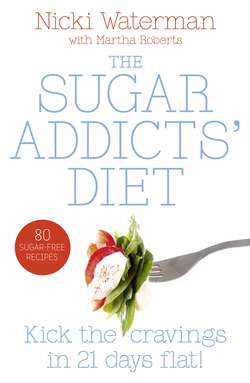Читать книгу Sugar Addicts’ Diet - Nicki Waterman - Страница 14
SUGAR IS EVERYWHERE
ОглавлениеPicture it – you wake up in the morning and have a bowl of cereal and a cup of tea. You’ll already have eaten more than 8 grams of sugar if you’ve had a bowl of cornflakes – make that 44 grams if it’s a bowl of Frosties. And that’s before you’ve sprinkled sugar on top of your cereal and put two spoons of it in your tea.
As a nation we’re eating more sugar than ever before. The average Briton eats 16 times more sugar today than 100 years ago. In 1900, people ate an average of 4 pounds (around 1.5 kilos) of sugar a year – the equivalent of around a bag and a half of sugar. Today, according to the UK’s National Diet and Nutrition Survey, that figure is 65 pounds or just over 24 kilos – the equivalent of 24 bags of sugar every year. That’s around 65 grams – 13 teaspoons – a day. In the US, added sugar can comprise as much as a quarter of a person’s daily food intake.
You might think, ‘But I don’t even buy that many bags of sugar in a year.’ True, you probably don’t. That’s because the figure comes not just from the sugar we actively put in our food, by sprinkling it on cereal or spooning it into tea and coffee. It also includes the ‘hidden’ sugar that’s so often put into our food at the manufacturing stage, and which we may not even understand we’re consuming. Food manufacturers are being increasingly pressurized by parents, campaign groups, politicians and health experts to reduce levels of sugar, fat and salt in certain foods and to call a halt to advertising foods to children (an issue we look into in Chapter 5). The Food and Drink Federation, which represents food manufacturers, announced that super-size chocolate snacks are due to be axed to help in the battle against obesity, which is a step in the right direction. But in the meantime, the onus is on us to be vigilant and look out for sugar for ourselves.
